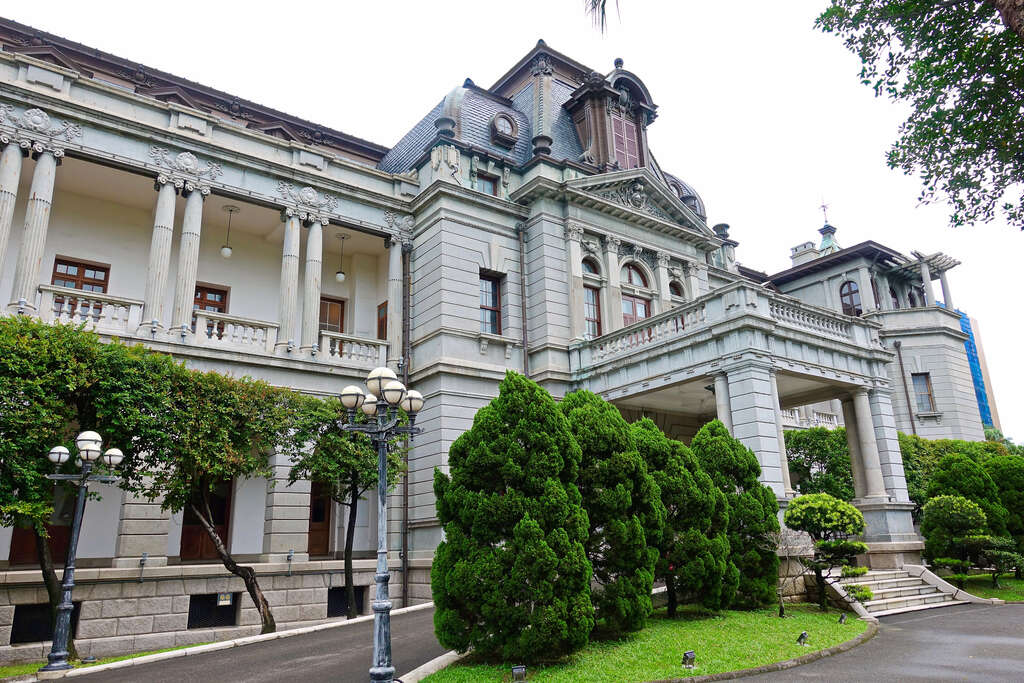Taipei Guest House Introduction
The Taipei Guest House, with its architectural elegance spanning over a century, has always been at the heart of Taiwan's politics. Its predecessor was the "Taiwan Governor-General's Official Residence" during the Japanese occupation; after Taiwan's restoration, it served as the official residence of the provincial governor. In 1950, it was renamed Taipei Guest House and became a significant national venue for state banquets, hosting foreign guests, party and government meetings, and cultural events. In 1998, it was designated as a national historical site by the Ministry of the Interior. The Taipei Guest House was originally constructed in 1899, designed by Japanese architects Kin Imai and Ichiro Nomura. The renovation in 1911, designed by Matsusuke Senzan, gave it its current appearance. Following the largest renovation since Taiwan's restoration, it was closed in 2002 and completed in May 2006. With the progress of Taiwan's democratization, the Taipei Guest House first opened to the general public on July 4, 2006, allowing the Taiwanese people a glimpse into its century-old mystique. The Taipei Guest House sits on a rectangular lot extending east to west, with the main building oriented north-south. It is a two-story structure made of brick, stone, and reinforced concrete. Influenced by Western historical architectural styles introduced to Japan during the Meiji Restoration, the Taipei Guest House features a Masard roof, Greek gables, Roman columns, and ornate Baroque-style decorations. It has wide balconies on all sides, reminiscent of official buildings in Southeast Asian and European colonial cities. A terrace in the southeast corner of the third floor provides a view of parade routes and street scenes during festivities. Historically, during the Japanese occupation, the Taipei Guest House served not only as the governor's residence but also as an administrative office and social reception venue. One of its first major events was the reception of Princess Fumiko of the Takamatsu-no-miya, who visited Taiwan in October 1901. Subsequently, it hosted numerous royal guests, including Prince Yoshihito (later Emperor Taisho), and important receptions, such as that of Crown Prince Hirohito (future Emperor Showa) in 1923. During Hirohito's stay at the governor's residence, most activities took place on the second floor, where official ceremonies were held. On the first day of his visit, the governor arranged for him to ascend the spiral staircase to the third floor, where he received cheers from the parade crowd on the terrace. After Taiwan's restoration, although the Taipei Guest House was no longer the governor's residence, it continued to be a main venue for government meetings and receptions for foreign guests. Various presidents have welcomed countless dignitaries there, including notable figures such as Japanese Prime Minister Nobusuke Kishi in 1957, Singaporean Prime Minister Lee Kuan Yew in 1981, former U.S. President Bill Clinton in 2005, and Straits Exchange Foundation Chairman Chen Yunlin in 2008. Additionally, many significant international treaties and agreements were signed in the banquet hall of the Taipei Guest House, the most important being the "Treaty of Taipei," signed in 1952 by Minister of Foreign Affairs Yeh Kung-chao and the Japanese plenipotentiary Ryohei Katō, which significantly relates to Taiwan's sovereign status. More recently, on May 14, 2009, President Ma Ying-jeou signed the "International Covenant on Civil and Political Rights" and the "International Covenant on Economic, Social and Cultural Rights," symbolizing an important step for Taiwan's integration into the international human rights system and its expansion of international human rights cooperation. Reflecting on the history of the Taipei Guest House, it is evident that its value lies not only in its century-long history but also as a building that cleverly combines Eastern and Western cultures, witnessing the flourishing changes in Taiwan over the past century. From any perspective, every brick and tile, every plant and tree here deserves our collective care and preservation.






























